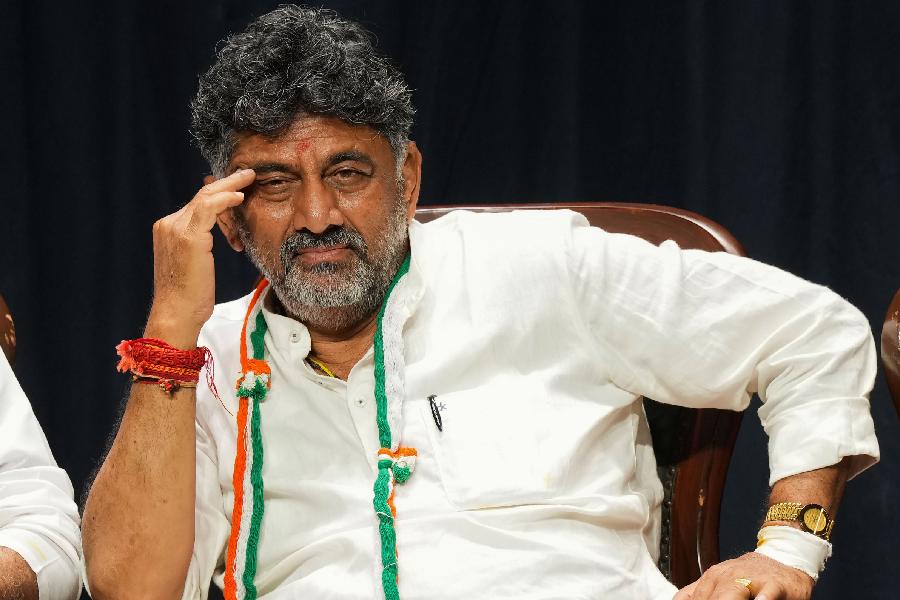
The remark, delivered at a Kempegowda Jayanti event hosted by the Bangalore Bar Association, came across as cryptic and suggestive, even as both top leaders maintain unity. “There are so many chairs, come and sit… If you look at yourself, you look like tyagis,” Shivakumar told the gathering, prompting fresh speculation about internal jockeying for position.
Siddaramaiah, speaking to reporters on Thursday in New Delhi, made his position explicit: “I am the Chief Minister. Am I not sitting here? There is no vacancy,” he asserted, countering notions of any mid‑term power transition. His statement came after AICC General Secretary Randeep Singh Surjewala had met with MLAs and both leaders in separate meetings seeking to diffuse the tensions.
The volatility began surfacing last month, when two Congress MLAs publicly advocated replacing Siddaramaiah with Shivakumar, triggering internal fissures that left party observers questioning cohesion. Against this backdrop, Shivakumar’s comment struck many as more than casual rhetoric. Analysts suggest it may reflect latent ambitions or subtle signalling that Shivakumar, a seasoned political operator and state PCC president, remains alert to evolving circumstances.
Acknowledging the stir, Shivakumar’s elder brother, former MP D. K. Suresh, sought to play down the remark. He described his sibling as “neither in a hurry nor under any pressure” and emphasised Shivakumar’s loyalty and deference to the Congress high command. Suresh dismissed chatter of MLAs rallying behind Shivakumar, stating it was “not the time to talk about MLAs’ support” and urged journalists to question those perpetuating the debate.
Further distancing himself from leadership rumour, Home Minister G. Parameshwara labelled the speculation “drama” and backed Siddaramaiah’s leadership. He recounted that both Centre-appointed party overseers and leaders remain unified, urging restraint among party functionaries.
Minister Priyank Kharge echoed that sentiment, saying no discussion of leadership change has occurred and that only the Congress high command would decide such matters.
Despite public denial of any power‑sharing deal by both Siddaramaiah and Shivakumar, political observers point to strategic moves behind the scenes. Last week, both leaders sought individual meetings with Rahul Gandhi, underscoring the significance of internal consultation and signalling possible negotiations over roles and portfolios.
Shivakumar, who arrived in Delhi following Siddaramaiah, later told reporters that the chief minister “has already given the answer” on the leadership front. He emphasised that discussions about succession should not occur in public and the party will act “when the time is right.” He added that the “job” of the duo is to ensure victory in the 2028 assembly elections, not to be embroiled in medial speculation.
Behind the public calm, insiders recount a simmering tussle. Since the government crossed the halfway mark—in November when it completes two and a half years—it fell in the political sweet spot for power recalibration. Siddaramaiah, who completed his term once before between 2013 and 2018, is keen to do so again. Shivakumar, widely regarded as the party’s chief troubleshooter and a formidable vote-winner, appears positioned as a natural contender should a change become inevitable.
The wider Congress high command is believed to be quietly monitoring the ground mood, assessing MLAs’ leanings and managing the optics of both timing and messaging. Senior party leaders have maintained that there is unity at the top and no formal discussions on terminating Siddaramaiah’s tenure have taken place.
Political commentator Rahul Krishnan observed that both the chief and deputy chief ministers are acutely aware of their strengths. “Shivakumar’s chair metaphor is a calculated reminder—leadership isn’t permanent, so one must be ready,” he said. “Siddaramaiah, on the other hand, is sending a firm message: any transfer of power would be decided only from the highest levels, not through public signalling.”
As Karnataka marches towards the final 30 months of its term, party unity will be tested by legislative performance, factional loyalties and shifting alliances. For now, both leaders appear intent on projecting solidarity, even as silent signals and symbolic statements continue to reverberate through the political corridors of Bengaluru.
